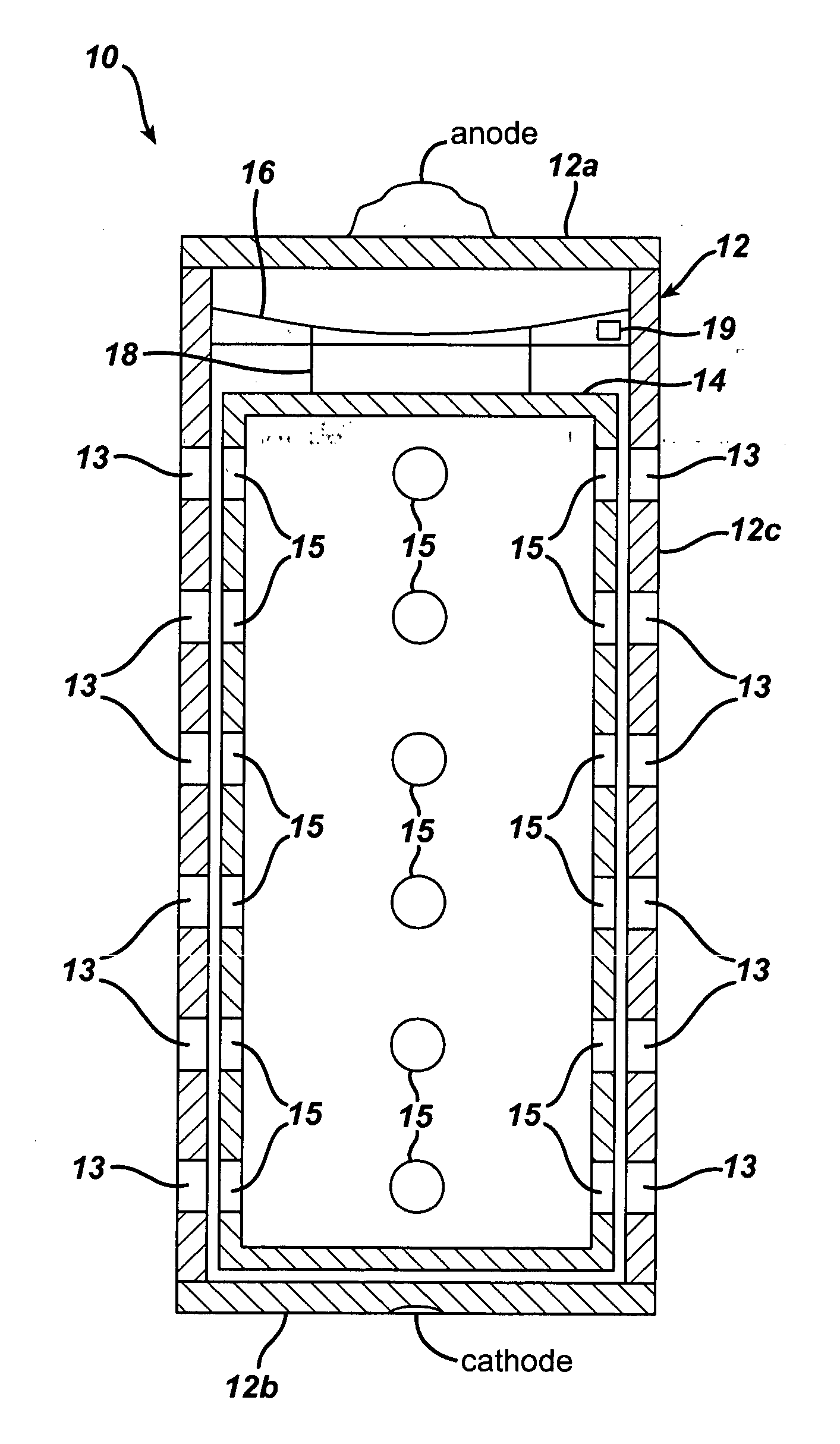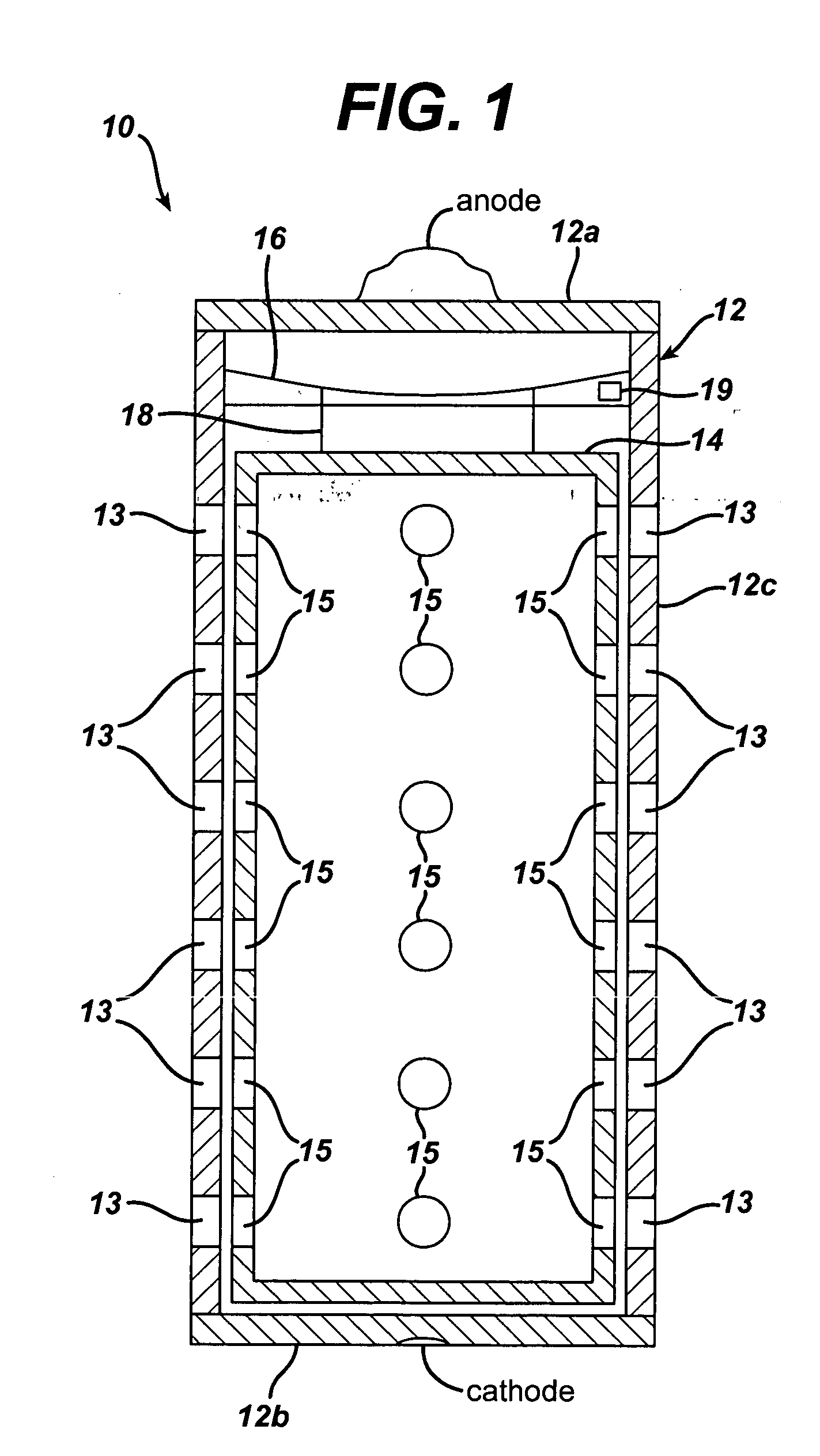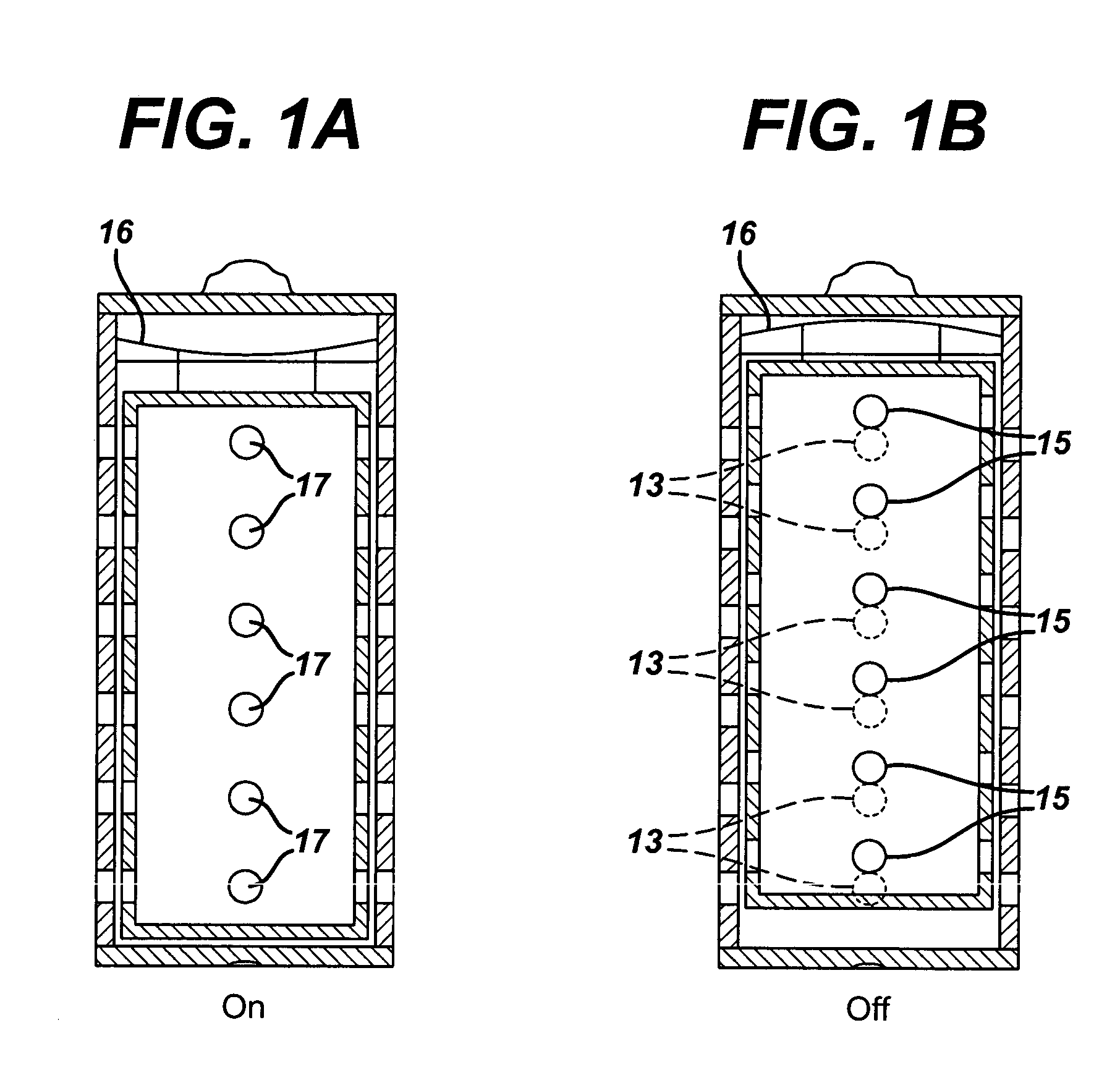Battery
a technology for metal-air batteries and batteries, which is applied in the field of batteries, can solve the problems of limited service life of metal-air batteries, “drying” of cells, and flooding of cells, and achieve the effect of prolonging the useful service life of cells
- Summary
- Abstract
- Description
- Claims
- Application Information
AI Technical Summary
Benefits of technology
Problems solved by technology
Method used
Image
Examples
Embodiment Construction
Referring to FIG. 1, a battery 10 includes a housing 12. The housing 12 includes an upper member 12a that supports an anode contact and a lower member 12b that supports a cathode contact. Disposed between the upper and lower members 12a, 12b is a first cylindrical member 12c that together with the upper and lower members forms the housing 12 or “battery can” for the battery 10. The cylindrical member 12c has at least one hole, here shown having a plurality of evenly-spaced holes generally 13 arranged in a series of columns along the length of the cylindrical member 12c. In a typical configuration, each hole is 0.5-1.0 mm in diameter although other diameters could be used and the holes need not be round. In an exemplary embodiment, 48 holes are provided for an “AA” can, the holes are arranged in 8 columns of 6 holes each, though a broad range of other sizes, numbers and configurations of holes could be used. The cylindrical member 12c is exposed to air and can in general carry a lab...
PUM
| Property | Measurement | Unit |
|---|---|---|
| electrical energy | aaaaa | aaaaa |
| current | aaaaa | aaaaa |
| length | aaaaa | aaaaa |
Abstract
Description
Claims
Application Information
 Login to View More
Login to View More - R&D
- Intellectual Property
- Life Sciences
- Materials
- Tech Scout
- Unparalleled Data Quality
- Higher Quality Content
- 60% Fewer Hallucinations
Browse by: Latest US Patents, China's latest patents, Technical Efficacy Thesaurus, Application Domain, Technology Topic, Popular Technical Reports.
© 2025 PatSnap. All rights reserved.Legal|Privacy policy|Modern Slavery Act Transparency Statement|Sitemap|About US| Contact US: help@patsnap.com



